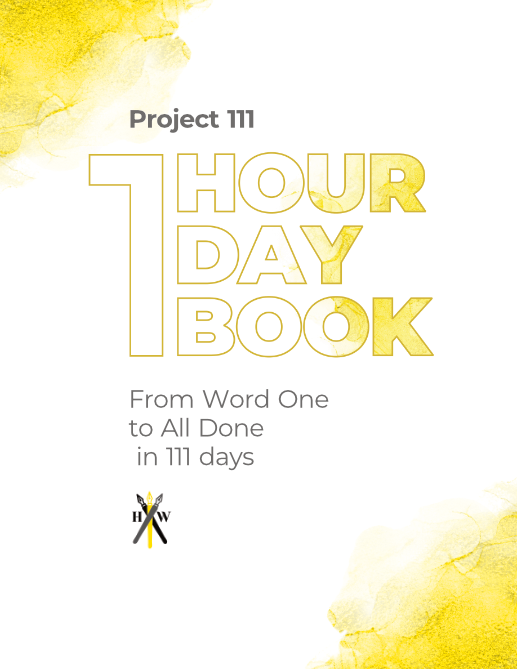Intro
I’m sure you’ve heard the phrase, “It’s not what you say; It’s how you say it.” Whether or not you agree with this sentiment, I’m sure you can agree with the notion that not all words mean the same things to different people, and people can certainly say something and mean the total opposite.
What the phrase is getting at – without actually saying it – is subtext. Boiled down, subtext is the meaning we hide beneath the words we say, speak, write, or sing. Understanding what subtext is and how to use it will greatly improve your characters, strengthen your themes, and help you write in a way that is ripe for analysis.
As the article goes on, we will look at what subtext is, answer “what is an example of subtext?”, and show what writers can do to better integrate subtext in their work.
Table of Contents
What is Subtext?

The Merriam-Webster dictionary succinctly defines subtext as “the implicit or metaphorical meaning” of a literary text. Subtext, however, doesn’t need to remain in the realm of literature and stories.
Films use subtext. Video games use subtext. Even we use subtext in our daily lives when communicating. All storytelling and all language involves at least some subtext.
The trick is using it well.
In order to understand subtext in the common day-to-day, we can look at sarcasm.
Sarcasm showcases a form of subtext by having the spoken words mean the opposite of the intended sentiment, recognizable only know through context. Let’s imagine that you’re sitting in a cafeteria and you hear a loud clang.
Oh no! Someone dropped their tray, and soup spilled all over their pants.
The person next to you calls out, “Congrats, man! Way to go!”
While the words themselves convey motivation and congratulatory affirmation, this imaginary bully meant the exact opposite. Rather than congratulating a success, the person drew further attention to the accident to demean the poor, soup-covered soul.
Body language is another form of subtext that we use in real life, but it’s often difficult to convert into a written medium for fear of superfluity.
Let’s pretend that you’re out on the basketball court, and someone just elbowed your teammate in the nose. A whistle is blown because he falls to the ground. Maybe the ref calls a foul on the opponent who did it, maybe not. But when you go to ask how your teammate is, you notice that some tears are wetting his face, and he’s shaking a bit. You finally ask, “Are you okay?”
He responds saying. “Yeah, I’m good.” Clearly he’s not. The subtext here shows that despite what he said, he’s not well. His nose is bleeding, he’s tearing up, and he’s visually in pain.
But the subtext of his body language can go deeper than that.
The fact that he’s trying to come off as okay may play into the fact that he wants to look strong for his team. Maybe he’s the captain and thinks showing weakness will lower morale. The implicit meaning might be that while he’s not alright, he needs to be alright for the people counting on him.
Characters, just like people, often say something but mean another, or imply something by the words they choose. The dissonance between intent and speech creates this underlying subtext and should invite the reader to dig deeper into the story.

Our 84-page book planner and 111 day writing course.
What is an example of subtext?

Given that subtext theoretically exists everywhere, we could examine any number of storytelling media. However, the quintessential high school example of subtext comes from Ernest Hemingway’s short story, “Hills Like White Elephants”.
Before we get into the story, it’s important to note that Ernest Hemingway coined the “Iceberg Theory” which deals with subtext and sharpening your storytelling to give only the most necessary ingredients. He compares storytelling to an iceberg. From above the water, we can only see a small portion of the actual size of an iceberg, just like how most of the story’s meaning lies beneath the actual prose.
His theory is that writers should omit things they know from the story in order to hone their prose into immaculate concision. Anyone who’s read Hemingway or heard of his writing style knows that he’s famous for his clippy yet elegant prose.
He goes on to argue that it will not only strengthen a writer’s ability to write, but it will also form a bond between the reader and writer, given that the writer trusts the reader enough to dive into the story.
“Hills Like White Elephants” is a simple story when we remove the subtext: a man and a woman talk about an operation while they wait for a train. (If you haven’t read it yet, you can find it here.)
The subtext, however, displays the more accurate story by hinting at the fact that the operation is an abortion and that the man is confident what the woman should do, but she has been considering other plans.
Hemingway provides the subtext within the dialogue, the subtle exposition, and the connotations of words. He never once uses the word abortion, but with images like hills to represent a pregnant belly and white elephants to represent an unwanted gift, the metaphorical meaning becomes clear.
The YouTube channel “Good Blood” has a video on subtext called “Ocarina of Time: A Masterclass in Subtext”. The video essay delves into the way Ocarina of Time (OoT) differs from other Legend of Zelda video games because it tells different threads of the story through subtext.
Many Zelda games deal with themes of sadness, tragedy, and corruption, but OoT is the only one that never uses words like “sadness” or “regret”. By utilizing dialogue, characters, and worldbuilding, OoT expresses these themes in subtext. The player isn’t told to feel sad, they experience it through the underlying and implicit meaning found within the game.
How Should You Integrate Subtext?

Understanding subtext is one thing, but actually putting it into your story can be difficult. That being said, if we look at subtext on a macro/micro level, figuring out its place in your story can be easier.
Micro-subtext is a distinct moment of subtext within a small portion of your writing. This can look like characters’ dialogue when they imply something other than what they’re saying. Doing so doesn’t necessarily build on subtextual themes like macro-level subtext, but it can strengthen your characters and make your writing more believable.
In order to accurately include micro-subtext, observing the way people speak is key. No one says exactly what they mean all the time. Observe your own thoughts and the way you speak. Imagine how you would write the dialogue.
You should also have a solid understanding of your character’s motivation. Doing so will enable you to write engaging dialogue and more realistic characters. Adding subtext to a scene can improve the tension and give the reader more to think about as they read.
Macro-subtext, on the other hand, is built off micro instances. You inlay macro subtext by building your environments, characters, and dialogue with a theme in mind. Just like in the OoT subtext, you can have every part of your story hinting towards a greater whole without ever mentioning it.
With macro subtext, you want to be elusive but engaged with your reader. You know the whole story, but you should take some of it out (tastefully of course) so that the readers can gain the satisfaction of digging into it and finding out for themselves.
Last of All

Constructing your story, characters, and world with subtext can deepen your writing skills and create stories that readers keep coming back to. The words of your story should be only the tip of the iceberg, with the themes, metaphorical and implicit meanings, and motivations lying beneath the surface.
By writing in such a way, you can sharpen your prose, exposition, and dialogue while ramping up your story’s tension.
Make sure, however, not to use subtext to the point where you’re writing out of character scenes. Also, don’t take enormous chunks out of your story if it will negatively impact your readers’ experience; make sure they know enough of the story not to experience confusion.
Remember, writing in subtext can be satisfying for you and the reader alike. For more tips on storytelling and writing habits, check out Habit Writing’s other articles.
gavinwride
Gavin is a fantasy author, short story enthusiast, and nature lover. When he’s not reading, writing, or exploring the outdoors, he is likely playing games. His board game collection is probably too big for someone living in a small apartment, and he has enough yet-to-be-played video games to fill a lifetime. His favorite book is "The Name of the Wind". His favorite author is Edward Abbey. His favorite game is "Dark Souls III", and he’d be more than happy to spend the day talking about lore, bosses, and game mechanics.
Our 84-page book planner and 111 day writing course.
